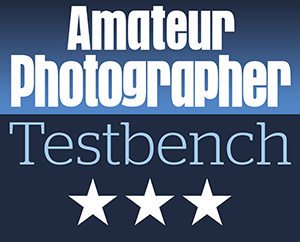Peak Design’s original Clutch strap is popular with DSLR users who like carrying their camera in their hand but want some security. However, it doesn’t work with cameras that have a grip that’s narrower than the photographer’s hand. The solution is the Peak Design Micro Clutch, which is designed to accommodate two fingers of your right hand, while your index finger is on the shutter release and your little finger is tucked underneath the camera.

The Micro Clutch is designed as a minimalist finger strap to provide extra security when holding a camera. Image credit: Peak Design
Peak Design Micro Clutch at a glance:
- $64.95 / £51.35
- Available with L or I-plate
- Mounts via the camera’s tripod bush and strap lug
- Supplied with a Peak Design tripod plate
- Features a recycled aluminium base plate and Hypalon hand pad
- www.peakdesign.com
There are two versions of the Micro Clutch, one with a straight or ‘I’ base-plate and one with an L-shaped plate – not to be confused with an L-bracket. The I-plate is for use with cameras that don’t have a protruding grip, such as the Fujifilm X100V or OM System OM-5, while the L-plate version is likely to be more popular as it’s for cameras like the Fujifilm X-T5, Canon EOS R5 and Nikon Z7 II that have a grip.

Peak Design Micro Clutch L-bracket version on Nikon Z7 II, with Capture plate and strap connector. Image credit: Angela Nicholson
Peak Design Micro Clutch key features:
- Concealed tool: A slot in the front of the base-plate houses a tool to tighten and loosen the mounting bolt
- Adjust to fit: A series of holes in the strap allows it to be adjusted to the desired length
- Tripod plate: Peak Design supplies two bolts of different lengths, so the Micro Clutch can be used with or without the provided tripod quick-release plate.
- Battery door: The camera’s battery door is covered, meaning the base plate needs to be loosened and swivelled round to change the battery

Along with the strap itself, the kit comes with a tripod plate, two attachment screws, and a split ring for your camera’s strap lug. Image credit: Andy Westlake
The first step in fitting the Micro Clutch is to decide whether you want to use it with or without the supplied tripod plate, which is compatible with Arca-Swiss clamps or the Peak Design Capture clip system. If you want to use it without, you need to use the short bolt, while the longer bolt allows the tripod plate to be attached as well as the base plate.
Whichever option you go for, the bolt initially needs to be threaded into the camera’s tripod bush, but not tightened. Then the base plate, or both the base plate and the magnetic tripod plate, are slotted onto the bolt and slid into position, before finally the bolt is tightened using the concealed tool. This is fiddly because the tool is a flat-head screwdriver with its head at 90° to the handle.

The finger loop is adjustable in length, but fiddly to attach. Image credit: Angela Nicholson
Next, the strap on the Micro Clutch needs to be threaded through the camera’s strap lug (or the lug supplied by Peak Design). The fastening mechanism of this isn’t as easy to use as I was hoping, which means it can’t be adjusted very quickly.
A long slot in the base plate allows it to be used on cameras of different widths. However, if your camera has its tripod socket right at the front of the baseplate, like a lot of compact mirrorless models, the base plate will end up at an odd angle.

On cameras with tripod sockets at the front of the body. such as the Olympus PEN-F, the base plate ends up at an awkward angle. Image credit: Andy Westlake
Conveniently, the base plate has a hole for slipping in a Peak Design Anchor loop, and there are four similar holes in the tripod plate. Consequently, you can still use a Peak Design strap, such as the Slide, Slide Lite, or Leash, when the Micro Clutch is attached to the camera.
Peak Design Micro Clutch: Our Verdict
Because it lacks the original Clutch’s ease of length adjustment, I find the Peak Design Micro Clutch less comfortable to use. However, its main downside is that the base plate covers the battery compartment door, which in some cases is also the memory card door. That means you must use the supplied tool to loosen the plate every time you need to change the battery or memory card. This is made worse by the fact that the tool is fiddly to use. Overall, it’s a rare mis-step from Peak Design.

Follow AP on Facebook, Twitter, Instagram, and YouTube.







